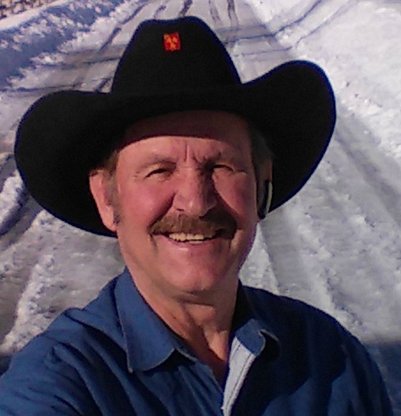“Why are the horses running?” my wife asked.
I looked out the window and 15 of our horses were running full speed across the pasture. I ran out of the house, climbed a high corral fence and saw a mama grizzly and two cubs a hundred yards from me running for their lives. The horses were in hot pursuit led by Scout, our most mischievous horse. If there is trouble Scout will be right in the middle of it.
“Grab the camera!” I yelled.
I can testify from firsthand observation that grizzlies, even 6-month-old cubs, can outrun a horse. The bears hightailed it out of the pasture and into the dense trees of the river bottom just beyond.
What I believe happened was the bears had come out of the river bottom and attempted to cross our pasture when they bumped into the horses. The horses were curious, went toward them to get a better look, and then the bears turned to leave. I’m sure Scout said, “Hey, let’s play tag.” Which led to the stampede.
We don’t live in the remote mountains. We live about a mile west of the airport with homes scattered around the neighborhood. What were those bears doing in civilization?
On April 5 I went to the Wyoming Game and Fish Department meeting at which they explained their proposed Grizzly Bear Management Plan. The U.S. Fish and Wildlife Service says the grizzly population has fully recovered and it’s time to delist the bears. That delisting could happen this year.
Saturating their range
Wyoming Game and Fish has spent 35 years and $40 million researching grizzly bears and developing a plan to manage them for an average of 674 bears and to ensure their numbers don’t fall below 612. The presentation was well researched in documenting the expansion of the grizzly population. Grizzly bears have saturated their range, forcing some to migrate into other areas just to have a place to live. Perhaps that explains why the horses had to chase bears out of our pasture. One roaming grizzly had a conflict with humans west of Rexburg, Idaho, in farm country.
Some claim Game and Fish can’t be trusted to manage grizzlies “because they overhunted them, pushing them to the brink of extinction, causing them to be listed as endangered.” Not true. In the last six years before the listing of the grizzly in Wyoming as “threatened” hunters killed an average of five grizzlies annually.
The grizzly harvest wasn’t enough to keep pace with the growth in numbers. The population didn’t crash because of hunting, it crashed because Yellowstone National Park closed the garbage dumps “cold turkey” in the 1960s.
Generations of grizzlies did not know how to fend for themselves. They followed their noses to human food sources, got into trouble and were subsequently removed from the population, mostly by the National Park Service. That is well documented in Frank Craighead’s book “Track of the Grizzly.”
The Interagency Grizzly Bear Study Team held a convention on Nov. 4, 2015, in Jackson Hole. Commenting on the team’s estimate of 714 grizzlies in the Greater Yellowstone Ecosystem, team leader Frank van Manen told attendees “We are underestimating probably by about 40 percent.” Adjusting for that admitted “low bias” would put the grizzly population at about 1,000.
That is not a “small fragile population” as a representative of the Humane Society alleged in a letter to the editor on April 13. A thousand grizzlies is a lot of bears.
The Fish and Wildlife Service says each grizzly needs about 50 square miles to call home. That is 5 miles by 10 miles not all that large for a huge wandering bear with a big appetite. With approximately 20,000 square miles of grizzly habitat in the Greater Yellowstone Ecosystem, 400 bears would be “full.” We have twice that number. We are hoarding bears.
Polls don’t say it all
A recent poll says 2 of 3 Americans think grizzlies should never be hunted. I doubt the poll explained that their habitat is saturated with bears. When you have “enough” then what do you do with the surplus?
The biggest obstacle to scientific grizzly management is the threat of tag-team lawsuits by professional litigators hired by so-called conservation organizations. These lawsuits have one purpose: to raise money from uninformed people with soft hearts who think these organizations will “save the bear cubs” from those dastardly hunters. Instead, the delay in managing the bears will be detrimental. Increasing numbers will damage their habitat and drive them into areas where they are in close proximity to humans. Conflicts result in euthanasia. The very profitable nonprofits and their lawyers are the only winners. There is reason to question their motives.
It’s a critical time for common sense management of the grizzly, which is what Wyoming Game and Fish is proposing. We should set aside personal feelings and prejudices so we are open to accepting professional biologists’ recommendations.
A soft heart is commendable, but being informed is better. We all love grizzlies. They are big beautiful animals. But when there are “enough” of them we must limit the increase. We can’t possibly protect them indefinitely. The time has come to let the professionals manage grizzly bears.
Remember, life is always better when viewed from between the ears of a horse.

